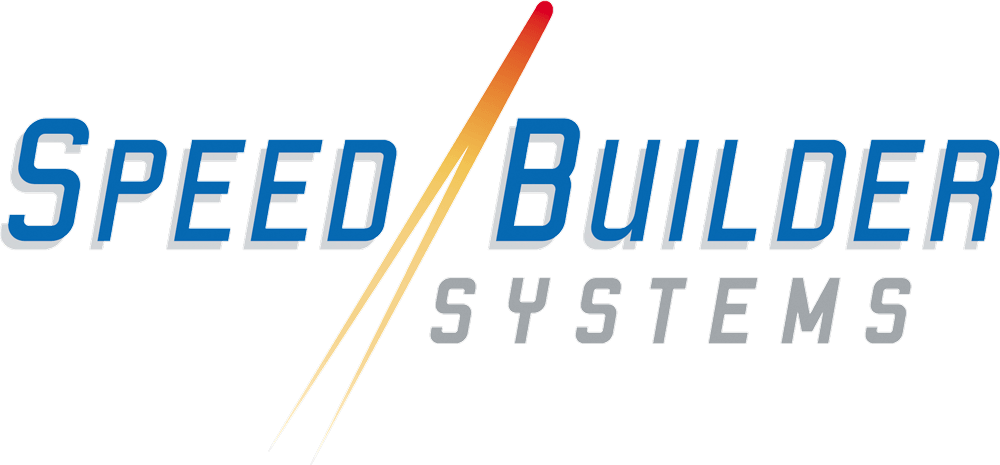What Digital Transformation in Insurance Means for Your Business
Your underwriting takes weeks when it should take hours. Customers abandon applications halfway through because the process feels like punishment, while your competitors are already serving them. You’re stuck in committee meetings explaining why launching a simple product is a six month process.
So you buy technology and call it digital transformation in insurance. Except nothing actually transforms. The new tools just sit there because nobody changed how people work. Your data analytics go unused, your automation creates different bottlenecks, and customer service still sounds like 1997.
So, what’s the fix? Stop buying software and start rebuilding how decisions get made. Give your workforce real intelligence to move fast. Create efficiency that shows up in your financials, not presentations. Deliver experiences that make customers stay.
The insurance industry has already moved on. Either transform how your operation runs, or face the consequences.
Modernizing Your Legacy Core: Greenfield vs. Transformation Approaches
Your legacy core still writes policies and pays claims—but it also slows quotes, blocks clean data, and chews through budget like a bad hurricane season. It was built for paper files and batch nights, not APIs, real‑time pricing, or a regulator pinging you for a report at 4:57 p.m.
The few people who can still touch that code are either retiring or invoicing you like outside counsel.
So, it’s not a question of whether or not to fix it, but how to fix it.
One route is the full transplant: shut the old system down and move all the solutions to a brand new platform in one painful swing.
The other is Greenfield: stand up a new, cloud-ready core system next to the legacy core, move business over in controlled slices, and kill technical debt on your own timetable instead of a vendor’s: same destination, different stress level.
In plain English, each has its pros and cons. But when you consider a configurable, API-first platform like BindExpress from SpeedBuilder Systems, a Greenfield rollout looks all the more practical even for a conservative shop.
Traditional Insurance Digital Transformation: Rip-and-Replace and Upgrades
The traditional way to go about things is to completely upgrade or replace the legacy core where it sits. Either you do a full big‑bang migration of every line to a new core, or you let the vendor “upgrade” your existing PAS. Same house, new wiring, while the family keeps living in it.
Upside: One Core, One Source of Truth
Win the gamble and you land on a single modern platform: consolidated data, consistent processes, cleaner compliance reporting, and a tech stack your auditors won’t side‑eye. Digital capabilities snap into place faster when everything talks to one core. Plenty of carriers try to soften the blow with hybrids—hollowing out the old core, carving off billing or portals, and swapping modules piece by piece. McKinsey calls it “progressively modernizing” for a reason: staged rollouts tame risk while still pointing the ship forward.
Downside: Complexity, Cost, and Project Fatigue
The horror stories are real: multi‑year programs that run 100–500% over budget and rollouts scrapped after burning millions. Too many stakeholders, too many integrations, and data migration that always takes longer than anyone priced. Business wants old processes copied; IT wants new workflows adopted; both sides dig in, and timelines slip. Legacy-core projects get labeled “too big to manage” for a reason—once momentum stalls, it’s hard to restart without writing another seven‑figure change order.
The Greenfield Approach to Digital Transformation in Insurance: New Core in Parallel
If you want speed without detonating the legacy core, Greenfield means standing a clean, cloud-ready platform right next to the old system and writing new business there on Day 1. The legacy core keeps existing policies breathing until you’re ready to move them. Think of it like a new factory chugging immediately, while the old plant works through its backlog.
Why It Works: Faster Launches, Fewer Anchors
Time-to-market drops from “after the data migration” to “in a few months.” You skip hauling decades of history before you sell policy #1, and you tap SaaS updates without recoding ancient customizations. Product teams stop waiting on the legacy core’s release cycle and start iterating. And to show for it, you get a configurable system earning premium while the legacy core winds down on your schedule, not the vendor’s.
Where It Bites: Data Drift and Double Carry
Two cores mean two sets of plumbing. Legacy data still needs to feed analytics, CRM, and regulatory reports, or you create blind spots. Sloppy mapping turns into extra maintenance and confused dashboards. And until the last renewal comes off the legacy core, you’re paying to run both. Yes, Greenfield buys speed up front, but you still have to clean up the “floating” data and retire the old system before the carrying costs eat the win.
Industry Trends and Modernization Strategies for Enabling Digital Transformation
Global insurance IT spend landed around USD $214.56 billion in 2024 and is tracking toward ~USD $300 billion by 2032—a 4.28% CAGR over that stretch. Estimates also peg the wider IT world at ~USD $3.8 trillion for 2024–2025. Yet the insurance slice of that pie is its own animal: heavy on software and services tied to compliance, AI, cloud, big data, and even blockchain.
Translation: leadership is funding the plumbing, not pet projects.
Follow the Spend
Boards are tired of funding Band‑Aids. They’re chasing digital transformation in insurance, customer-facing tools that run on mobile and AI, and tighter compliance with the rules that govern personal data privacy. Every quarter the legacy core stays put, the liability grows. So budgets shift—quietly but decisively—toward ripping out tech debt and standing up something that can change without a six-month specification document.
The Payoff a CFO Can Easily Defend
Boston Consulting Group still pegs revenue lift around ~25% when a digital core drives automation and real-time data. Product launch cycles shrink 3–4x. Intellias points to ~40% productivity gains once claims and servicing stop tripping over manual rekeying and stale tables. Add lower run costs and analytics that flag fraud before it dents the P&L, and the ROI story writes itself: faster cash, cleaner books, fewer “why is this still manual?” emails.
Configurable, Cloud-Ready Core = Stress-Free Change
Cloud-native PAS, open APIs, low-code rules—all vendor jargon until you’re staring down a change request that wipes out your Q2 savings. A configurable, API-first core lets product-changes move from “development sprint” to “business rule update” in your digital transformation journey. Vendors ship continuous upgrades; you take them without tearing apart custom code from 2011. Open APIs keep the new platform talking to the legacy stack and third parties while you roll out in phases. That’s why Greenfield feels sane: launch a line, prove value, move to the next.
Legacy Bottlenecks Keep Raising the Tax You Pay to Stand Still
Old platforms choke personalization, stall automation, and lag on security and compliance. Support costs climb while the last COBOL whisperer eyes retirement. New rules, i.e., updates to financial privacy and data security requirements under the Gramm-Leach-Bliley Act, expose gaps you can’t patch cheaply. Every quarter, you keep that legacy core hanging around, the agility gap widens. A cloud-ready, configurable core gives you speed without losing control, which is why many shops are writing big checks and expecting measurable success quickly.
SpeedBuilder Systems: A Stepwise, Configurable Core for P&C
You need to modernize your legacy core system on your timeline—without setting your operations team on fire. We get it. Every IT leader faces this same impossible equation: the business demands innovation, but is the risk of disrupting mission-critical systems worth it?
At SpeedBuilder Systems, we built the BindExpress Suite with a straightforward objective. Instead of forcing clients into a risky “rip and replace” scenario, give them something that works the way they need it to so they can modernize—gradually and safely.
- Web-Based Freedom That Won’t Break Your Budget: BindExpress runs completely in your browser. You won’t have to worry about clunky desktop programs or software installations your IT team has to push out to every single computer. Smaller and mid-tier P&C carriers get policy, claims, billing, and analytics without the enterprise-level price tag or complexity that makes everyone’s eyes glaze over.
- Business Users Who Can Configure Without Coding: Your underwriters and product managers get thousands of built-in configuration options through the SCoRE configurator and toolkit, which means they can launch new products and adjust rating rules without filing IT tickets. Watch your development backlog shrink while your business team stops waiting six months to test a simple rate change.
- Upgrades That Don’t Punish Your Customizations: SpeedBuilder’s AlwaysCurrent™ architecture separates your custom configurations from core platform updates. You can take new features and enhancements when they drop instead of getting stuck on ancient versions because your custom code would break everything. A problem that haunts most legacy system owners.
- APIs That Speak Both Legacy and Modern: The platform connects to your existing systems through REST APIs, so your old data warehouses keep getting fed while you test new functionality. Run parallel cores during migration without the usual data sync nightmares that make CTOs reach for antacids.
- Migration Strategy That Won’t Crater Your Operations: Deploy BindExpress for new business while keeping existing policies on your legacy system. Migrate one line of business at a time, prove the ROI to skeptical stakeholders, then tackle the next piece. Your operations team can rest easier while you modernize at a pace that won’t drain the quarterly budget
The Modernization Sweet Spot: Progress Without Panic
Every P&C insurance executive knows their legacy core system is living on borrowed time. Still, nobody wants to be the one who gambled the company on a tech upgrade gone wrong. The traditional “rip and replace” approach feels like renovating your kitchen by tearing down the entire house first. Theoretically, you’ll get something better, but good luck eating while everything’s under construction. The real sweet spot is finding that middle ground where you can modernize strategically without putting your entire operation at risk. Smart P&C insurers have learned that progress doesn’t require panic.
That’s exactly why we built BindExpress Suite the way we did. We understand you need to modernize without losing sleep, so we let you pick your battles—start with billing, test the waters with claims, whatever makes the most sense for your specific operation. Our AlwaysCurrent™ architecture means you won’t get stuck trying to upgrade every time we release new features, and you definitely won’t be the executive explaining to the board why the system went down during peak renewal season. Instead of betting everything on a massive overhaul, you can start seeing tangible results in weeks while keeping your risk exposure minimal.
Contact SpeedBuilder Systems today to learn more.


